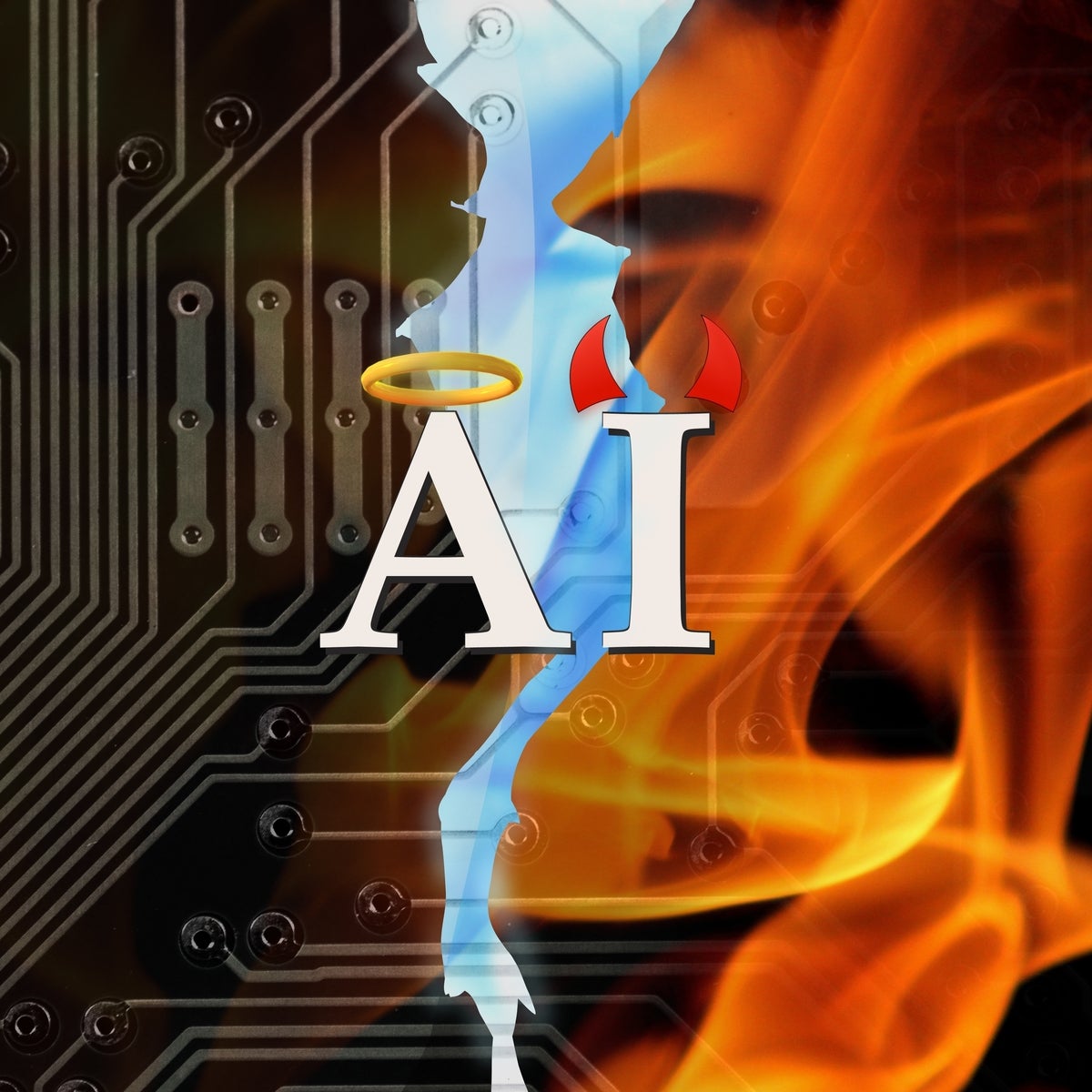Malicious hackers are weaponizing generative AI

The headline here is not that this new threat exists; it was only a matter of
time before threats powered by generative AI power showed up. There must be some
better ways to fight these types of threats that are likely to become more
common as bad actors learn to leverage generative AI as an effective weapon. If
we hope to stay ahead, we will need to use generative AI as a defensive
mechanism. This means a shift from being reactive (the typical enterprise
approach today), to being proactive using tactics such as observability and
AI-powered security systems. The challenge is that cloud security and devsecops
pros must step up their game in order to keep out of the 24-hour news cycles.
This means increasing investments in security at a time when many IT budgets are
being downsized. If there is no active response to managing these emerging
risks, you may have to price in the cost and impact of a significant breach,
because you’re likely to experience one. Of course, it’s the job of security
pros to scare you into spending more on security or else the worst will likely
happen.
Avoiding the Pain of a ‘Resume-Driven Architecture’
A resume-driven architecture occurs when the interests of developers lead them
to designs that no longer align with maximized impacts and outcomes for the
organization. Often, the developer clings to a technology that provides them a
greater level of control and, at least initially, a higher salary. Meanwhile,
the organization gets an architecture that only a handful of people know how
to manage and maintain, limiting the available talent pool and hindering
future innovation. ... There’s no sense in investing resources in a bespoke
architecture if it’s not providing you with any differentiation—especially
when competitors are achieving the same outcome with fewer resources.
Moreover, getting stuck in a Stage Two mindset when the field moves on to
Stage Three (or, worse, Stage Four) and cuts you off from the next wave of
innovation. Subsequent technology breakthroughs often build on top of—and
interoperate with—the previous technology layers. If you’re stuck with a
custom architecture when the industry has moved on, you can miss out on the
next wave of innovation and fall further behind competitors.
In the Great Microservices Debate, Value Eats Size for Lunch

A key criterion for a service to be standing alone as a separate code base and
a separately deployable entity is that it should provide some value to the
users — ideally the end users of the application. A useful heuristic to
determine whether or not a service satisfies this criterion is to think about
whether most enhancements to the service would result in benefits perceivable
by the user. If in a vast majority of updates the service can only provide
such user benefit by having to also get other services to release
enhancements, then the service has failed the criterion. ... Providing value
is also about the cost efficiency of designing as multiple services versus
combining as a single service. One such aspect that was highlighted in the
Prime Video case was chatty network calls. This could be a double whammy
because it not only results in additional latency before a response goes back
to the user, but it might also increase your bandwidth costs. This would be
more problematic if you have large or several payloads moving around between
services across network boundaries.
Enhancing Code Reviews with Conventional Comments

In software development, code reviews are a vital practice that ensures code
quality, promotes consistency, and fosters knowledge sharing. Yet, at times,
they can drive me absolutely bananas! However, the effectiveness of code
reviews is contingent on clear, concise communication. This is where
Conventional Comments play a pivotal role. Conventional Comments provide a
standardized method of delivering and receiving feedback during code
reviews, reducing misunderstandings and promoting more efficient
discussions. Conventional Comments are a structured commenting system for
code reviews and other forms of technical dialogue. They establish a set of
predefined labels, such as nitpick, issue, suggestion, praise, question,
thought, and notably, non-blocking. Each label corresponds to a specific
comment type and expected response. ... By standardizing labels and formats,
Conventional Comments enhance the clarity of comments, eliminating vague
language and misunderstandings, ensuring all participants understand the
intent and meaning of the comments.
How the modern CIO grapples with legacy IT

When reviewing products and services, Abernathy considers whether a
technology still fits into requirements for simplicity of geographies,
designs, platforms, applications, and equipment. “Driving for simplicity is
of paramount importance because it increases quality, stability, value,
agility, talent engagement and security,” she says. Other red flags for
replacement include point solutions, duplicative solutions, or technologies
that become very challenging because of unreasonable pricing models,
inadequate support or instability. In some ways, moving to SaaS-based
applications makes the review process simpler because decisions as to
whether and when to update and refactor are up to the provider, Ivy-Rosser
says. But while technology change decisions are the responsibility of the
provider, if you’re modernizing in a hybrid world, you need to make sure
your data is ready to move and that any changes don’t create privacy issues.
With SaaS, the review should take a hard look at the issues surrounding
ownership and control.
The psychological impact of phishing attacks on your employees
The aftermath of a successful phishing attack can be emotionally draining,
leaving people feeling embarrassed and ashamed. The fear of accidentally
clicking a phishing email can affect a person’s performance and productivity
at work. Even simulated phishing attacks can cause stress when employees are
lured with fake promises of bonuses or freebies. Furthermore, when phishing
emails repeatedly get through security measures and are not neutralized,
employees may view these as safe and click on them. This could ultimately
lead to employees losing faith in their employer’s ability to protect them.
... Organizations owe it to their employees to be proactive. To ensure
employees are protected, they should implement advanced technology that uses
Artificial Intelligence and Machine Learning models, such as Natural
Language Processing (NLP) and Natural Language Understanding. These tools
can detect even the most advanced phishing attempts and will serve as a
safety net.
Cyber liability insurance vs. data breach insurance: What's the difference?

Understanding the distinction is important, as cyber insurance is becoming
an integral part of the security landscape. Many companies may have no
choice but to find insurance as more organizations are requiring that their
business partners have cyber coverage. Many traditional business insurance
policies will simply not cover cyber incidents, considering them outside the
scope of the agreement, which is why cyber insurance has become a separate
form of protection. It’s also important to note that getting insurance isn’t
guaranteed — insurers are increasingly asking for more proof that strong
cybersecurity strategies are in place before agreeing to provide coverage.
Many companies may have no choice but to meet such terms. Put simply, cyber
liability insurance refers to coverage for third-party claims asserted
against a company stemming from a network security event or data breach.
Data breach insurance, on the other hand, refers to coverage for first-party
losses incurred by the insured organization that has suffered a loss of
data.
These leaders recognize that transformation investments remain critical to
any business, and they plan to emerge from these volatile times armed with
new business models and revenue streams. In short, they plan to continue
winning through transformation, and they are laser-focused about how they
will do it. You might even say they’re “outcomes obsessed.” ... Remember,
your goal is to prune the tree so it can thrive—not just to go around sawing
off branches. Any cuts must set up individuals, teams, and departments for
long-term success, despite the short-term pain. One way I’ve seen successful
leaders do this is by taking the choices they are considering (both cutting
investments and expanding them) and mapping them out in terms of their
expected financial and nonfinancial impact ... Top-performing companies look
beyond functional excellence, and instead aim for enterprise-level
reinvention that extends across the company’s business, operating, and
technology models. You should too. These transformations enable you to
strengthen ecosystems, close capability gaps, and better chart your future
revenue streams.
Don't Let Age Mothball Your IT Career

Age discrimination is a significant concern in the IT industry, Schneer
says. “Some companies may prioritize younger workers who are perceived to be
more tech-savvy and adaptable,” she notes. “However, experienced
professionals bring valuable skills and knowledge that can be an asset to
any organization.” Weitzel observes that it's difficult to know how
prevalent age discrimination is in any industry. “But applicants can be
proactive in combatting any false assumptions by showcasing upfront the
current skills and recent experience that employers are seeking.” Age
discrimination may be more prevalent in certain IT fields, such as software
development or web design, where rapid advancements in technology can make
older professionals feel less relevant, Schneer says. “However, roles that
require extensive experience and expertise, such as IT management or
cybersecurity, may be less susceptible to age bias.” When encountering
suspected age bias, senior IT workers should document any incidents or
patterns of behavior that suggest discrimination, Schneer advises.
Thinking Deductively to Understand Complex Software Systems
The main goal is to think through the role of tests in helping you
understand complex code, especially in cases where you are starting from a
position of unfamiliarity with the code base. I think most of us would agree
that tests allow us to automate the process of answering a question like "Is
my software working right now?". Since the need to answer this question
comes up all the time, at least as frequently as you deploy, it makes sense
to spend time automating the process of answering it. However, even a large
test suite can be a poor proxy for this question since it can only ever
really answer the question "Do all my tests pass?". Fortunately, tests can
be useful in helping us answer a larger range of questions. In some cases
they allow us to dynamically analyse code, enabling us to glean a genuine
understanding of how complex systems operate, that might otherwise be hard
won.
Quote for the day:
"To do great things is difficult;
but to command great things is more difficult." --
Friedrich Nietzsche
No comments:
Post a Comment